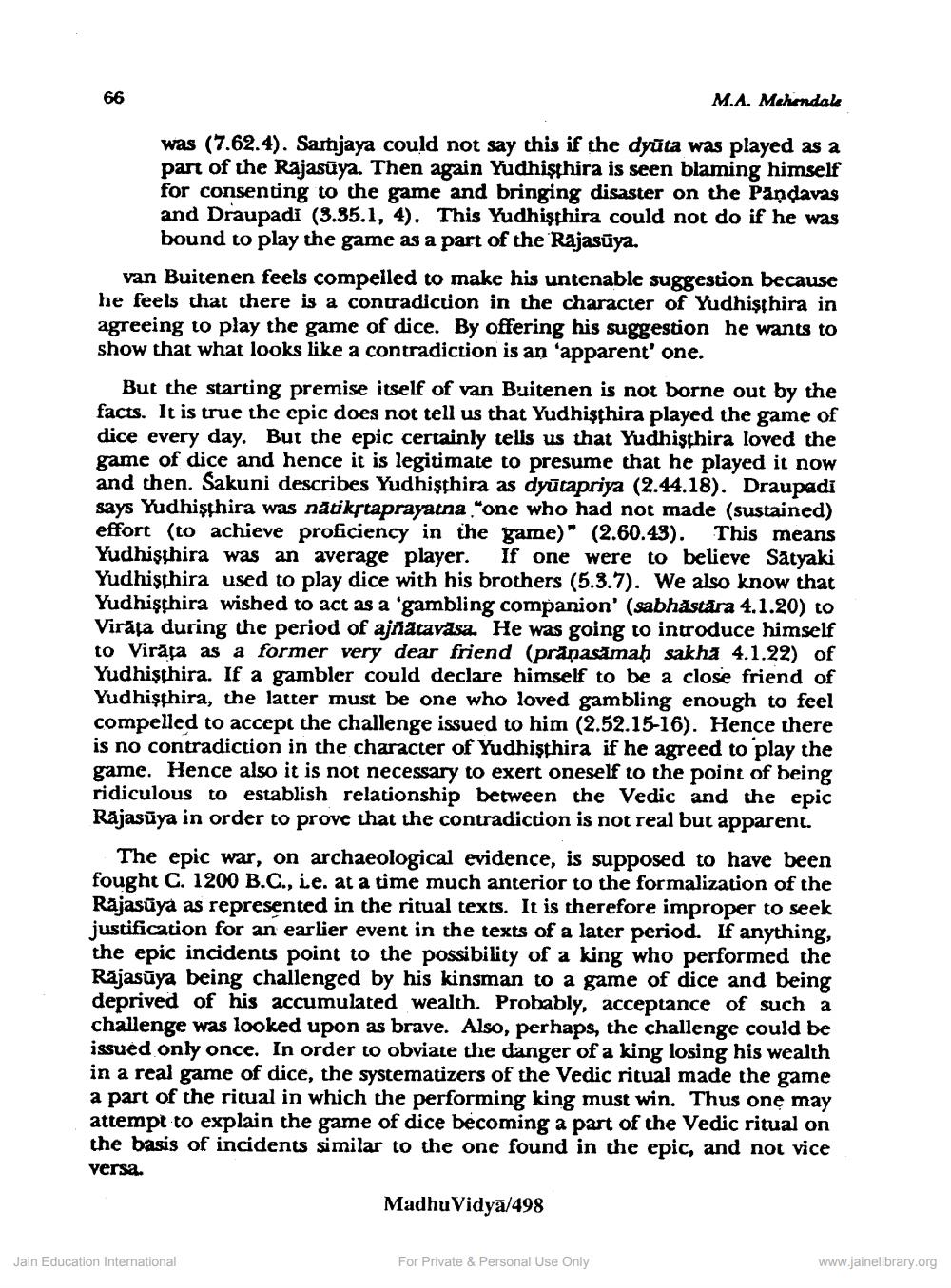________________
66
M.A. Mehendak
was (7.62.4). Samjaya could not say this if the dyūta was played as a part of the Rajasūya. Then again Yudhisthira is seen blaming himself for consenting to the game and bringing disaster on the Pandavas and Draupadi (3.85.1, 4). This Yudhisthira could not do if he was
bound to play the game as a part of the Rajasüya. van Buitenen feels compelled to make his untenable suggestion because he feels that there is a contradiction in the character of Yudhisthira in agreeing to play the game of dice. By offering his suggestion he wants to show that what looks like a contradiction is an 'apparent' one.
But the starting premise itself of van Buitenen is not borne out by the facts. It is true the epic does not tell us that Yudhişthira played the game of dice every day. But the epic certainly tells us that Yudhisthira loved the game of dice and hence it is legitimate to presume that he played it now and then. Sakuni describes Yudhişthira as dyūtapriya (2.44.18). Draupadi says Yudhisthira was nātiktaprayatna "one who had not made (sustained) effort (to achieve proficiency in the game)" (2.60.43). This means Yudhisthira was an average player. If one were to believe Satyaki Yudhisthira used to play dice with his brothers (5.3.7). We also know that Yudhisthira wished to act as a 'gambling companion' (sabhästara 4.1.20) to Virāta during the period of ajñatavasa. He was going to introduce himself to Virāça as a former very dear friend (pranasamah sakha 4.1.22) of Yudhisthira. If a gambler could declare himself to be a close friend of Yudhişthira, the latter must be one who loved gambling enough to feel compelled to accept the challenge issued to him (2.52.15-16). Hence there is no contradiction in the character of Yudhisthira if he agreed to play the game. Hence also it is not necessary to exert oneself to the point of being ridiculous to establish relationship between the Vedic and the epic Rajasūya in order to prove that the contradiction is not real but apparent.
The epic war, on archaeological evidence, is supposed to have been fought C. 1200 B.C., ie. at a time much anterior to the formalization of the Rajasūya as represented in the ritual texts. It is therefore improper to seek justification for an earlier event in the texts of a later period. If anything, the epic incidents point to the possibility of a king who performed the Rajasūya being challenged by his kinsman to a game of dice and being deprived of his accumulated wealth. Probably, acceptance of such a challenge was looked upon as brave. Also, perhaps, the challenge could be issued only once. In order to obviate the danger of a king losing his wealth in a real game of dice, the systematizers of the Vedic ritual made the game a part of the ritual in which the performing king must win. Thus onę may attempt to explain the game of dice becoming a part of the Vedic ritual on the basis of incidents similar to the one found in the epic, and not vice versa.
Madhu Vidyā/498
Jain Education International
For Private & Personal Use Only
www.jainelibrary.org




